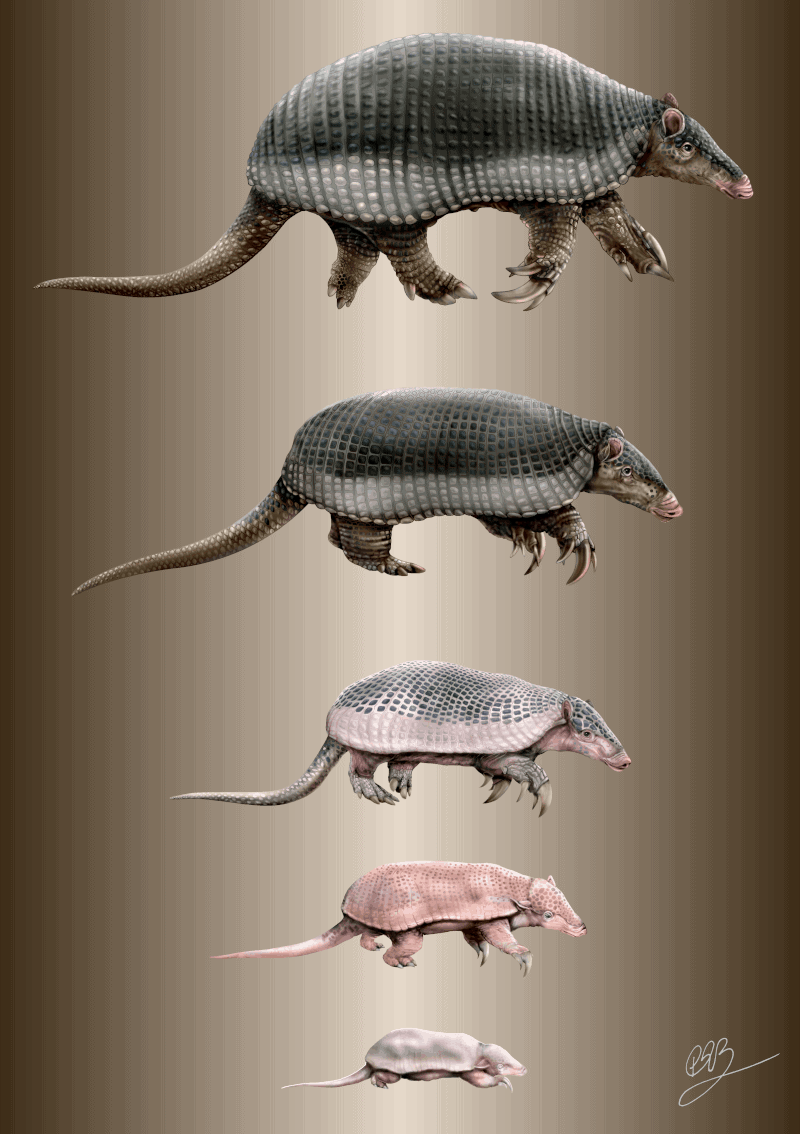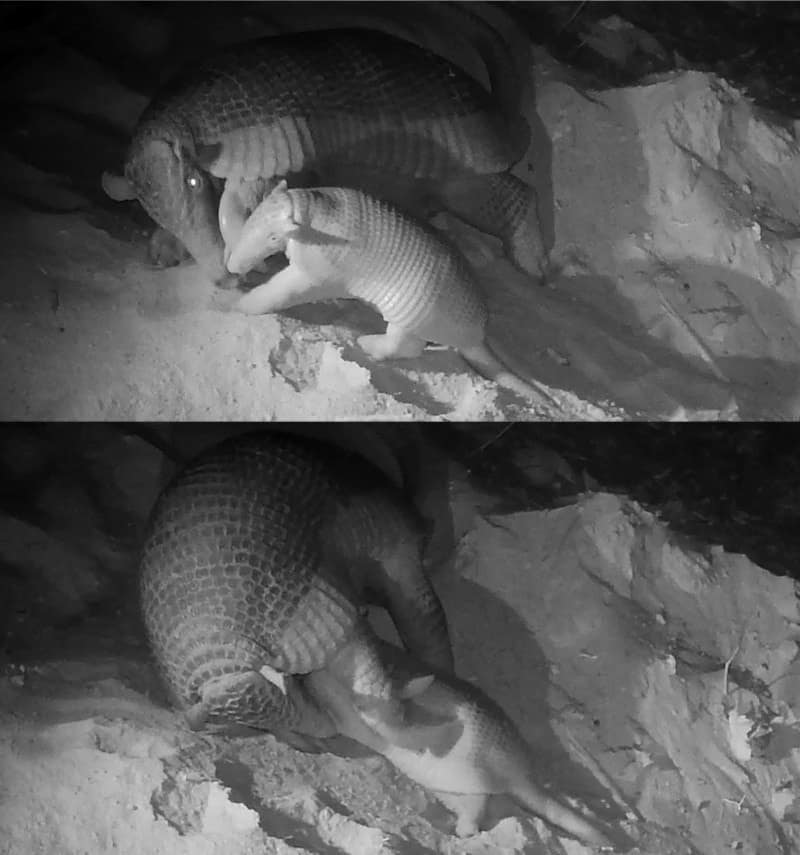Giant Armadillos are dedicated mothers
Not much is known about these gentle giants, but recent research suggests that the way Giant Armadillos reproduce may make them vulnerable to local extinction. New insights into the specifics of their reproduction can hopefully contribute to their protection and conservation.
By Arnaud Desbiez
The giant armadillo (Priodontes maximus) is the largest of the armadillo species – reaching up to 1.5 m from nose to tail and weighing up to 50 kg. Despite being widespread in much of South America and occupying a diversity of habitats ranging from tropical forests to open savannas, giant armadillos are rare. They spend most of their life underground in large, deep burrows, only coming out at night to forage on ants and termites that the armadillos dig out of their nests and mounds with large, curved claws. These claws are one of the most striking features of the species, the third of which is especially enlarged and can measure over 15 cm – that is longer than a polar bear claw!
Because of their nocturnal nature, their tendency to burrow and their low population density, giant armadillos are rarely observed and very little is known about their reproduction. A new article recently published in Mammalia provides valuable insights into the species’ gestation period, parental care behavior, juvenile development, time interval between births, number of offspring and even describes a potential infanticide.
“We were surprised by how dedicated giant armadillo mothers are”, says Arnaud Desbiez, founder of the Giant Armadillo Conservation Program. “Giant armadillo mothers change their offspring’s burrow on average once every two weeks, and from our camera traps we can see how these giants are actually very gentle.”
You are currently viewing a placeholder content from Youtube. To access the actual content, click the button below. Please note that doing so will share data with third-party providers.
The duration of parental care is long in giant armadillos because the offspring are completely dependent on their mother’s milk until they are 6-8 months old. In fact, weaning was estimated to occur only at 11-12 months. Even after the offspring are weaned, they continue to be dependent on their mother’s burrows until they are about 18 months old.
Giant armadillos are listed as being “Vulnerable” to extinction on the IUCN (International Union for Conservation of Nature) red list. This new data is very important for the conservation of the species as it highlights how low the population growth rate is for giant armadillos. For this reason, any threat to giant armadillo populations is very serious as the species can easily become locally extinct due to the fact that it does not have the capacity to breed rapidly and is thought to have only one offspring per birth. Worst of all, as few people ever see giant armadillos, their local extinction can go unnoticed.
Read the original article here:

